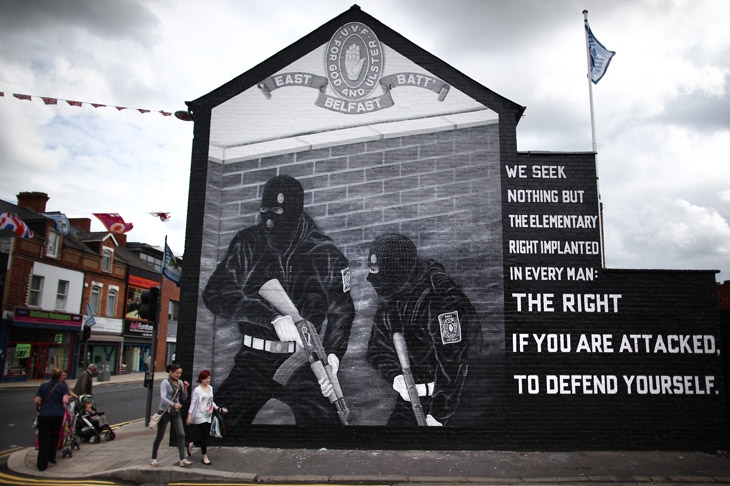This is a very modern novel. Terrorist atrocity sits side by side with the familiar and the mundane. Where better for this to happen than in Northern Ireland? At the Day’s End pub ‘two eejits in Halloween masks’ enter the bar; ‘Trick or treat,’ they shout. ‘Fut-fut-fut-fut went the gun.’ A woman screams, ‘then a very fast piece of metal entered the side of her head and she stopped’.
Throughout the first half of the book, the horror of the pub massacre alternates with the narration of an ordinary family’s home life. The blood-curdling incident impinges drastically on the lives of the family’s two daughters: Alison, who lives with her parents and is bringing up children from her failed marriage; and Liz, a successful academic in America, on her way to make a TV film about a new religion that has emerged in an island off Papua New Guinea called New Ulster. A dramatic contrast is established between the old and the new Ulsters. In the second half of the novel that recounts Liz’s experiences in Melanesia, Nick Laird shows that in many ways there is not much difference between the two.
Both societies are subject to problems engendered by religion, the ‘prods and the RCs’ in Ireland, and the cargo cult religion of the charismatic apostate Belef and her clash with evangelical missionary Christianity in New Ulster. Laird explores the themes of violence caused by the confrontations of rival creeds, and the fierce tribalism, some members ‘press-ganged into the caste’, that such loyalties create.
Simultaneously, Laird has wider reflections on the nature of time — ‘galactic time, nightmare, deep time, the time of stars, time of the moon.’ Yet he never loses sight of the prosaic, the real ordinary moment. That makes him consider, with some predictability, the possibility of redemption for the extremist who regrets his past. Yet there is no primrose path to forgiveness.
A particular appeal of Laird’s writing is his poetic imagination; a power pylon standing ‘with is arms upraised like St Kevin’s, in perpetual ache’; Liz’s attempt to join in a native dance, which reduces her to bobbing up and down ‘in the traditional Northern Irish manner like a cork or an aunt at a wedding’. These images delight and many combine with his sense of humour. At her second wedding, Alison and her new bridegroom appear like ‘a couple of insects coming down the aisle’, while the sweaty best man has a face ‘the colour of cooked gammon’.
The conclusion of Modern Gods is uncompromising. Whether it is Ulster or New Ulster, the ancient law prevails, ‘an eye for an eye, a tooth for a tooth’.






Comments